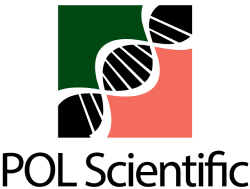3D visualization of human colon tissue using a modified CUBIC-based tissue-clearing technique

Background: Colorectal cancer represents one of the most common neoplastic diseases worldwide, making it a frequent focus in routine pathological analyses. Visualizing complex three-dimensional (3D) structures, such as nerves within tumors, requires thick tissue sections, which necessitates the use of optical tissue-clearing methods to achieve transparency. However, following tissue clearing, samples typically require advanced imaging techniques such as light-sheet and two-photon confocal microscopy, which are usually unavailable in standard histological laboratories. Objective: We aimed to demonstrate how a well-established tissue-clearing approach can be adapted for use in a routine histological laboratory, enabling a robust 3D visualization of nerve fibers in samples of both normal human colon and colon cancer tissues. Methods: We modified the “clear unobstructed brain/body imaging cocktails” method, originally developed for whole-brain imaging in mice, and applied it to human colon tissue samples measuring approximately 10 mm3, a standard size typically processed in pathological laboratories. Results: Our protocol, which integrates a tissue-clearing technique, enabled reliable immunofluorescent visualization of colonic nerve fibers labeled with anti-β3-tubulin antibodies. The labeled nerve fibers could be observed using a standard epifluorescence microscope, and high-quality 3D reconstructions were generated through a simple image analysis approach using the open-source software ilastik, which eliminates the need for confocal microscopy. Conclusion: The proposed steps provide a valuable method for researchers to visualize complex 3D structures, such as neural cells and processes, in both normal and tumor-transformed tissue settings.
- Sung H, Ferlay J, Siegel RL, et al. Global cancer statistics 2020: GLOBOCAN estimates of incidence and mortality worldwide for 36 cancers in 185. CA Cancer J Clin. 2021;71(3):209-249. doi: 10.3322/caac.21660
- Bulgarian National Cancer Registry. Cancer Incidence in Bulgaria, 2016 and 2017. Vol. XXVI. Bulgaria: Bulgarian National Cancer Registry; 2020.
- Liebig C, Ayala G, Wilks JA, Berger DH, Albo D. Perineural invasion in cancer: A review of the literature. Cancer. 2009;115(15):3379-3391. doi: 10.1002/cncr.24396
- Magnon C, Hall SJ, Lin J, Xue X, Gerber L, Freedland SJ. Autonomic nerve development contributes to prostate cancer progression. Science. 2013;341(6142):1236361. doi: 10.1126/science.1236361
- Albo D, Akay CL, Marshall CL, et al. Neurogenesis in colorectal cancer a marker of aggressive tumor behavior and poor outcomes. Cancer. 2011;117(21):4834-4845. doi: 10.1002/cncr.26117
- Susaki EA, Tainaka K, Perrin D, et al. Whole-brain imaging with single-cell resolution using chemical cocktails and computational analysis. Cell. 2014;157:726-739. doi: 10.1016/j.cell.2014.03.042
- Richardson DS, Lichtman JW. Clarifying tissue clearing. Cell. 2015;162(2):246-257. doi: 10.1016/j.cell.2015.06.067
- Nojima S, Susaki EA, Yoshida K, et al. CUBIC pathology: Three-dimensional imaging for pathological diagnosis. Sci Rep. 2017;7(1):9269. doi: 10.1038/s41598-017-09117-0
- Masselink W, Reumann D, Murawala P, et al. Broad applicability of a streamlined ethyl cinnamate-based clearing procedure. Development. 2019;146(3):dev166884. doi: 10.1242/dev.166884
- Tainaka K, Murakami TC, Susaki EA, et al. Chemical landscape for tissue clearing based on hydrophilic reagents. Cell Rep. 2018;24(8):2196-2210.e9. doi: 10.1016/j.celrep.2018.07.056
- Ren Z, Wu Y, Wang Z, et al. CUBIC-plus: An optimized method for rapid tissue clearing and decolorization. Biochem Biophys Res Commun. 2021;568:116-123. doi: 10.1016/j.bbrc.2021.06.075
- Jirásek T, Písaríková E, Viklický V, Mandys V. Expression of class III beta-tubulin in malignant epithelial tumours: An immunohistochemical study using TU-20 and TuJ-1 antibodies. Folia Histochem Cytobiol. 2007;45(1):41-45.
- Xu Y, Li P, Wang M, Zhang J, Wang W. Imaging the brain in 3D using a combination of CUBIC and immunofluorescence staining. J Biomed Opt. 2019;14(1):014022. doi: 10.1117/1.3083439
- Schindelin J, Arganda-Carreras I, Frise E, et al. Fiji: An open-source platform for biological-image analysis. Nat Methods. 2012;9(7):676-682. doi: 10.1038/nmeth.2019
- Berg S, Kutra D, Kroeger T, et al. Ilastik: Interactive machine learning for (bio) image analysis. Nat Methods. 2019;16(12):1226-1232. doi: 10.1038/s41592-019-0582-9
- Schmid B, Schindelin J, Cardona A, Longair M, Heisenberg M. A high-level 3D visualization API for Java and ImageJ. BMC Bioinformatics. 2010;11:274. doi: 10.1186/1471-2105-11-274
- Sage D, Donati L, Soulez F, et al. DeconvolutionLab2: An open-source software for deconvolution microscopy. Methods. 2017;115:28-41. doi: 10.1016/j.ymeth.2016.12.015

